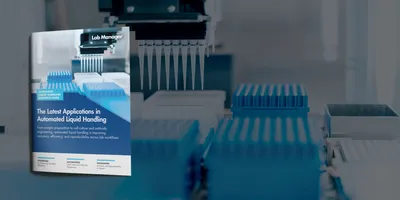Nearly every disease has an inflammatory component, but blood tests can't pinpoint inflammation in specific organs or tissues in the human body.
Now researchers at Case Western Reserve University have developed a method to detect inflammation using antibodies, potentially leading to blood tests for disease-specific biomarkers such as for heart disease, Alzheimer's disease and various cancers. Their breakthrough also holds promise for drug discovery.
"This research opens up an amazing number of pathways for future studies," said Greg Tochtrop, professor of chemistry at Case Western Reserve. "It will lead directly to better understanding inflammation and detecting diseases, as well as to discovering new drugs."
The research, which Tochtrop led, is published today in the journal Proceedings of the National Academy of Sciences (PNAS).
Inflammation leaves a trace
Tochtrop discovered that certain compounds formed from the interaction with reactive oxygen species (ROS) -- highly reactive oxygen-containing chemicals that can damage DNA, proteins and lipids -- react in a very unique way allowing detection using antibodies.
During inflammation, immune cells produce ROS to kill bacteria and other pathogens. ROS can also be generated by exposure to environmental factors like ultraviolet light, pollution, radiation and smoking. Excessive ROS can damage cells and tissues.
Tochtrop and colleagues investigated how ROS could react with linoleic acid, a fatty acid found in all cell membranes, forming compounds that can bind to RNA, DNA and proteins, called epoxyketooctadecanoic acids (EKODEs).
Tochtrop found that EKODEs react with the nucleic acid cysteine in a way that had never been described before, forming a stable bond. These compounds then accumulate in tissues throughout the body suffering from oxidative stress, like the brain, heart, liver and other organs. Tochtrop developed antibodies to these compounds from mouse models and was able to detect buildup of different types of EKODEs in various tissues, both in mice and humans.
"What makes this so interesting and so potentially valuable," Tochtrop said, "is that we could detect unique compounds and concentrations in different tissues and organs, which means that you could potentially detect a variety of diseases with a blood test."
The test could be similar to the A1C test for diabetes, which measures the percentage of hemoglobin in the blood coated with glucose, indicating the level of glucose circulating in the blood over the past three months. An EKODE test could reveal abnormal oxidative stress in specific organs.
Searching for disease-specific biomarkers
The next step, according to Tochtrop, is to identify different EKODE targets in various organs and tissues to correlate biomarkers with specific diseases. He is particularly interested in EKODEs produced in the eye in response to age-related macular degeneration or diabetic retinopathy that affect vision.
Tochtrop explained why these biomarkers had not been identified before: "We had to develop many of the tools in the lab to search for them in the first place," he said.
The researchers synthesized EKODE model compounds and then studied how they reacted with different amino acids, finding that cysteine is the only one that EKODE bound to for any length of time.
Advanced Lab Management Certificate
The Advanced Lab Management certificate is more than training—it’s a professional advantage.
Gain critical skills and IACET-approved CEUs that make a measurable difference.
"We looked at the inherent chemistry of the system, predicted what would form and then searched for them," he said. "There are very important translational implications, but this is an example of how looking at things from first principles can really inform the next steps to developing clinical tests."
Potential for discovering new drugs
The research could also aid drug discovery, as drug developers are looking for reactive cysteines.
"Identifying reactive cysteines is central to drug discovery right now," he said. "This could help uncover many reactive cysteines that could be targeted for drug discovery, which is a valuable offshoot of our research."
-Note: This news release was originally published by Case Western Reserve University. As it has been republished, it may deviate from our style guide.












